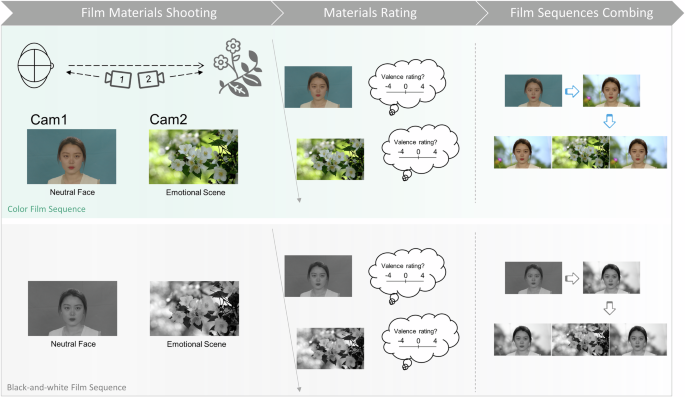
Color grading plays a critical role in shaping the emotional tone of films. By carefully selecting color palettes, filmmakers can evoke a wide range of feelings and guide the audience's emotional journey through the narrative. This report synthesizes insights from various sources on how color grading affects film moods.
Understanding Color Psychology in Film

Color is a powerful storytelling tool in cinema, conveying emotions and setting the tone far beyond mere aesthetics. According to research, 'the hues that fill the screen do more than please the eye—they convey emotions, set the tone, and subtly influence the viewer’s perception and understanding of the narrative'[2]. This understanding of color psychology is rooted in both artistic considerations and psychological principles, where different colors evoke distinct emotional responses. Warm colors, like reds and yellows, may elicit feelings of warmth and comfort or even anger, while cool tones, such as blues and greens, often create a sense of calmness or sadness.
Filmmakers strategically use color to guide viewer emotions, allowing for a more nuanced storytelling experience. The emotional responses are not just subjective; they can also be analyzed through scientific methods, blending the realms of filmmaking and psychology[4].
The Role of Color in Reinforcing Narrative Themes

Historically, the use of color in film has evolved significantly, from the early days of black and white to the vibrant hues made possible by innovations like Technicolor. Early films experimented with color in various ways to enhance storytelling and emotional impact. As noted, films like The Wizard of Oz exemplify how color transitions—from the sepia tones of Kansas to the colorful land of Oz—can signal shifts in narrative mood and emotional state[2].
Moreover, color can serve as a narrative device, reinforcing themes and character arcs. For instance, the selective use of color can highlight key narrative elements or themes that resonate with the audience on a subconscious level. In Schindler’s List, the girl's red coat stands out against a monochrome backdrop, powerfully symbolizing innocence amidst horror[3]. Such deliberate color choices deepen emotional engagement and enhance storytelling.
The Emotional Impact of Color Grading Techniques

Different color grading techniques can significantly influence mood and viewer perception. For example, warm color palettes generally create inviting and soft atmospheres, making them effective for romantic comedies and uplifting narratives. In contrast, cooler palettes can evoke feelings of anxiety or tension, often utilized in thrillers and horror films[1].
Moreover, color grading isn't limited to just the temperature of hues; it also encompasses saturation and contrast. High saturation can elicit excitement and energy, while desaturated tones might lend a more somber or artistic effect. The distinction between vibrant and muted colors can alter the viewer's interpretation of a scene. As one source highlights, 'a colorful/saturated palette creates a sense of vibrancy and expansiveness that tantalizes the viewer,' while a de-saturated palette can create a more focused, dramatic effect by eliminating distractions[1].
Combining Color with Editing for Emotional Effects

The interplay of color grading and editing techniques further amplifies the emotional response. A recent study demonstrated that color and editing together have significant effects on emotional perception, indicating that filmmakers must consider both elements in concert[4].
For instance, films that utilize high contrast with warm colors can generate heightened emotional intensity, creating an immersive experience that captures the audience's attention. This combined approach not only enhances the aesthetic quality of a film but also plays a crucial role in shaping the emotional landscape.
Practical Applications in Filmmaking

Filmmakers are encouraged to proactively incorporate color psychology into their pre-production and production processes. This dual focus allows them to refine their visual storytelling strategies, ensuring that the chosen color palettes align with the narrative's emotional trajectory. The research stresses that 'the further you push your colors from a neutral balance, the more stylized your image becomes,' accentuating the importance of intentional color choices within the film's context[1].
Additionally, filmmakers might engage in test screenings to measure audience emotional responses to different color grades and editing styles, optimizing emotional engagement through empirical methods. Utilizing techniques like fMRI during screenings allows for a deeper understanding of how various colors impact viewer emotional responses, presenting valuable insights for future projects[4].
Conclusion

Color grading is an indispensable element of film production that profoundly affects narrative mood and audience emotional engagement. By leveraging color psychology and innovative grading techniques, filmmakers can craft narratives that resonate deeply with viewers. Understanding the nuances of color grading—including its psychological impact, relationship with editing, and strategic applications—empowers filmmakers to create more compelling and emotionally charged cinematic experiences.
Get more accurate answers with Super Pandi, upload files, personalized discovery feed, save searches and contribute to the PandiPedia.
Let's look at alternatives:
- Modify the query.
- Start a new thread.
- Remove sources (if manually added).